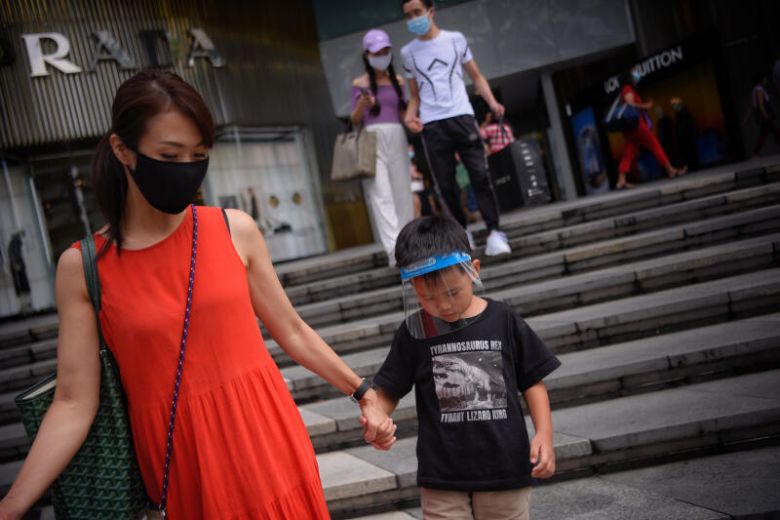Children under 5 at lowest risk of being infected by COVID-19 from adults—study

Higher viral loads were discovered in the nasopharynx of asymptomatic children. ST PHOTO: MARK CHEONG
SINGAPORE — Children under the age of five are at the lowest risk of being infected by Covid-19 from adults, as they may be more resistant to the virus, according to a household transmission study conducted by the KK Women’s and Children’s Hospital (KKH).
According to the study results released on Wednesday (Oct 21), there was a transmission rate of 6.1 percent among children exposed to Covid-19 cases out of the 137 households surveyed.
The adult-to-child transmission rates were similar regardless of the child’s gender, and the risk of secondary infection in children were higher if the index Covid-19 patient was the child’s mother.
The youngest group of infected children – between zero and four years old – had the lowest rates of infection at 1.3 percent, compared to 8.1 percent for older children between five and nine years old, and 9.8 percent for those between 10 and 16 years old, following exposure to a household member with Covid-19.
Dr Yung Chee Fu, consultant at the KKH’s Infectious Disease Service, said this trend may be due to the “increased expression of the angiotensin-converting enzyme 2 receptors (the receptor that Sars-CoV-2 uses for host entry) in the nasal epithelium with increasing age, thus it is possible that younger children are more resistant to Sars-CoV-2 infection at a cellular level”.
Article continues after this advertisementAround 4 in 10 children were asymptomatic
A separate study of 39 children infected with Covid-19 between January and May found that 38.5 percent of the children remained asymptomatic, while those who were symptomatic did not have a poorer outcome compared to asymptomatic cases.
Article continues after this advertisementThere was a larger proportion of younger children who were found to be symptomatic compared to older ones, with 75 percent of children from ages zero to four exhibiting symptoms compared to 53 percent in children from ages five to nine, and 64 percent in the 10 to 16 age group.
Common symptoms included low-grade fever, runny nose, sore throat, diarrhea, and loss of smell or taste.
Higher viral loads were discovered in the nasopharynx of symptomatic children, indicating the possibility of higher transmissibility.
However, both asymptomatic and symptomatic children had experienced peak viral loads occurring around day two to three of their diagnosis, suggesting viral shedding and transmission in the pre-symptomatic phase.
All 39 children surveyed stayed in the hospital for an average of 15 days. They had a mild disease course and have already been discharged.
Young children may not be primary drivers of covid-19 transmission in pre-schools
The screening of children from three potential transmissions of Sars-CoV-2 incidents in educational settings – a secondary school and two pre-schools – did not detect any evidence of Sars-CoV-2 transmission among children.
Close contacts of two Covid-19 positive students- one from a pre-school and the other from a secondary school – had tested negative for Covid-19.
In contrast, 16 adult staff members from a second pre-school, and 11 cases from their household contacts tested positive for Covid-19, while none of the children had tested positive for Covid-19 following extensive screening.
Dr Yung noted that the “clinical manifestation of Covid-19 in children has been reported to range from asymptomatic to moderate rather than severe, but the burden of disease and the pediatric role in community transmission has remained largely unknown”.
A review conducted by the hospital also found that non-invasive methods of testing, such as buccal swabs, where DNA is collected from the inside of a person’s cheek, is not sufficient to screen for Sars-CoV-2 in children.
Similarly, saliva testing also found poorer sensitivity and lower viral loads in kids, making nasopharyngeal (back of the nose) and oropharyngal (back of the throat) swabs the best practice to test for Covid-19 in children.
For more news about the novel coronavirus click here.
What you need to know about Coronavirus.
For more information on COVID-19, call the DOH Hotline: (02) 86517800 local 1149/1150.
The Inquirer Foundation supports our healthcare frontliners and is still accepting cash donations to be deposited at Banco de Oro (BDO) current account #007960018860 or donate through PayMaya using this link.